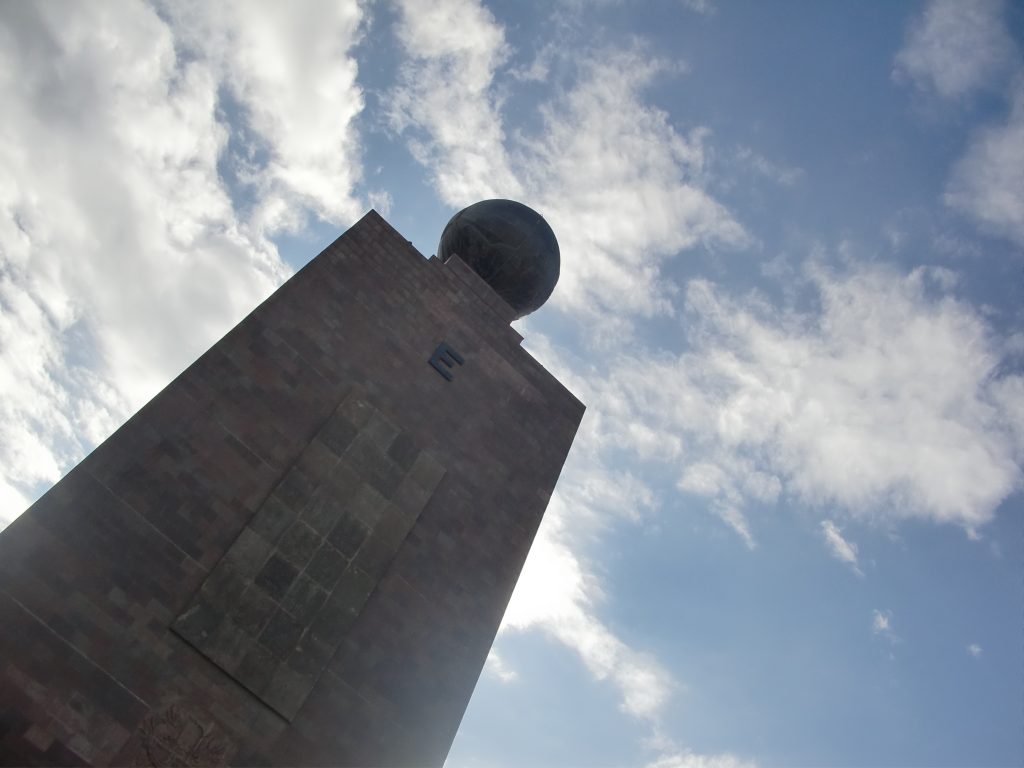Ecuador is a charming place to visit with an increasingly prominent tourism projection. The capital Quito, the large and populous Guayaquil, or the Ciudad Mitad del Mundo (Middle of the World City), where you can literally step on the earth’s equator line, are just some of this fascinating country’s attractions.
We recommend you start out discovering Ecuador with a visit to Quito, the country’s capital city. It has a population of almost 2 million living in its urban centre, and a further 2.5 million in the metropolitan area. It’s located in the Pichincha province and officially recognised as the highest capital city in the world (2800m above sea level), and many people experience altitude sickness when they first visit the city. We can testify to this, and it’s not very pleasant…


The most recognisable tourist icon in the city has to be El Panecillo, a giant sculpture of the Virgin Maria standing at an impressive 3000m above sea level. It’s the most visited site in the city and is undoubtedly one of the best vantage points in Quito.

Sitting on top of the El Pencillo hilltop is an aluminium piece known as the “Virgin of Quito” that was created by the Spanish artist Agustín de la Herrán Matorras and said to be the largest aluminium icon in the world. Its appearance is taken from classic Madonna iconography described in the Book of Revelation, the Woman of the Apocalypse, with the wings and a chain to catch the snake (the devil) at its feet.
Ciudad Mitad del Mundo is located in the San Antonio parish in the canton of Quito, just a little over 15km north of the city, but it can take up to 90 minutes to get there by car depending on the traffic. It’s a great tourist attraction for both adults and children and highlights the exact location of the line marking the middle of the world.

In addition to the stone monument and having one foot in the northern hemisphere and the other in the south, the area is also full of experiments and trivia related to the physical properties of this place at latitude zero degrees, some of which include changes in body weight and gravity (thanks to the well-known experiment of balancing an egg on the head of a nail), and water flowing both counter-clockwise and clockwise down a drain. It’s a great spot to learn more about science and take some interesting pics playing on the equator line.
In terms of food, one delicacy stands out from all the country’s other dishes: Cuy, or guinea pig is said to be highly nutritious and is also a symbolic dish for Ecuadorians. This premium dish is usually only served to distinguished guests on special occasions. However, it’s best not to see the animal before it’s cooked as you might not fancy eating it. This feeling will increase even more when you see how it’s cooked on a spit. But it would be a shame not to try it, so just open your mouth and get on with it. The taste is exquisite, and the preparation of the roasted guinea pig is very much seen as a social and culinary event.

Ecuador has many places worth visiting, but we’d like to highlight a few here before finishing. The first is Cuenca del Ecuador with its colonial architecture and buildings resembling the classic Hanging Houses of its Spanish counterpart (don’t expect to see anything exactly the same) and the second is Guayaquil, the most populated city in Ecuador. It’s a charming city to visit and worthy of another article in the future dedicated exclusively to the city. But for today, here’s an appetiser with a photo of the famous “Parque de las Iguanas” just in front of the façade of the city’s cathedral.







